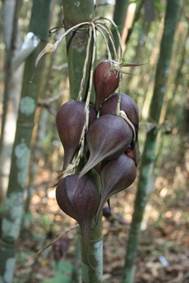Description

Copyright infringement not intended
Context: A study conducted by Jawaharlal Nehru Tropical Botanic Garden and Research Institute (JNTBGRI), Thiruvananthapuram spanning 13 years has shed interesting light on flowering in Melocanna baccifera.

Details:
- The study was funded by the Science and Engineering Research Board (SERB), the Department of Science and Technology, the Government of India, and the Kerala State Council for Science, Technology and Environment (KSCSTE) under the Kerala government.
- Melocanna baccifera is a tropical bamboo species known for its association with the occurrence of ‘bamboo death,’ ‘rat floods’ and famines in northeast India.
- Researchers detected a correlation between the sugar content in the fruit of Melocanna baccifera and the frenzied feeding and population boom in rats during ‘Mautam’, the cyclical, mass bamboo flowering that occurs once in 48 years.
- Called ‘Muli’ in northeast India, Melocanna baccifera is the largest fruit-producing bamboo and is native to the northeast India-Myanmar region.
- During its gregarious flowering, the bamboo produces large fruits which draw animal visitors/predators.
- During this period, they also multiply rapidly, a phenomenon dubbed as ‘rat flood.’
- Earlier, it was presumed that ‘high protein in fruits/seeds’ was attracting the rats. However, a JNTBGRI study in 2016 that was part of the research found that the fruit actually contains very little protein. The predation is mainly due to the high content of sugars.

https://www.thehindu.com/sci-tech/energy-and-environment/sweet-not-protein-in-bamboo-fruits-triggers-rat-boom-study/article66153100.ece
















